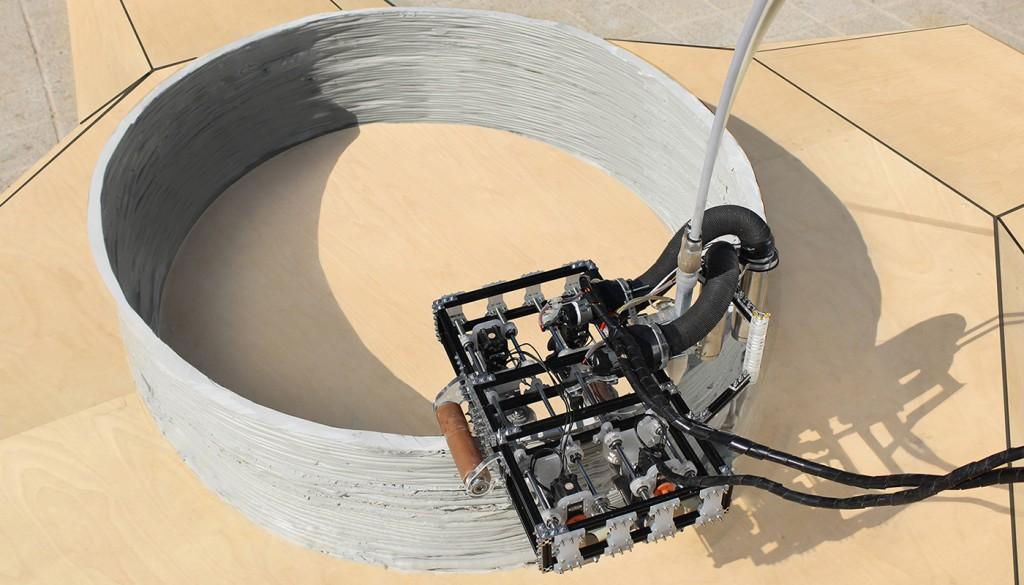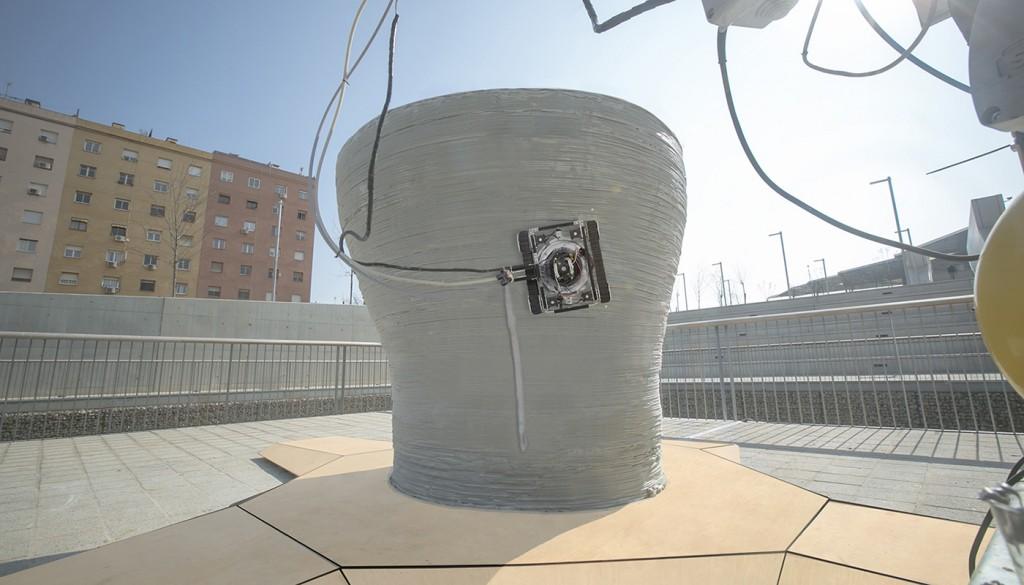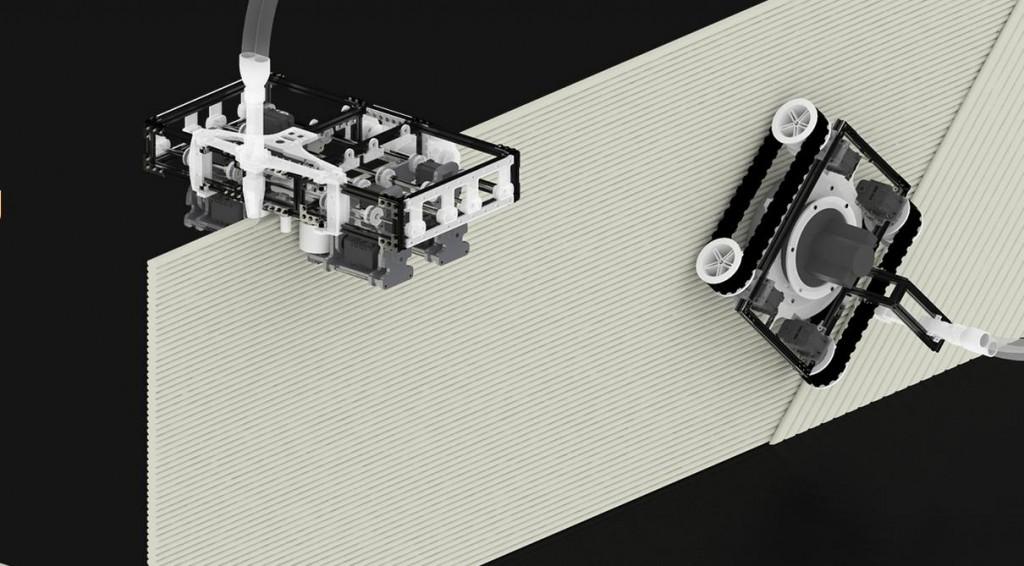It is amazing how quickly the technologies around 3D printing have been developing over the last couple of years. Not only are we seeing Moore’s Law-like increases in the speeds of these prints, all the while prices are 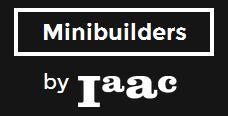 dropping substantially, but entirely new innovative approaches seem to emerge each day.
dropping substantially, but entirely new innovative approaches seem to emerge each day.
For instance, we have already seen 3D printing drones, combo 3D printer/CNC machines, a 3D printing assembly line, and all sorts of crazy new ways to print with food. Today a unique, but quite innovative approach to 3D printing has been unveiled by a team of researchers at the Institute for Advanced Architecture of Catalonia (IAAC), based in Barcelona, Spain.
One problem with 3D printers today, is that their build envelopes are limited by the size of the actual printer. In order to print a house, you need a 3D printer which is larger than that house. This severely limits the utility of any one device, and equates to substantial costs for any person or company trying to print on a large scale. A team of researchers, led by Sasa Jokic, and Petr Novikov at IAAC, and includes Stuart Maggs, Dori Sadan, Jin Shihui and Cristina Nan, have invented and worked diligently on a method of printing large scale objects, such as buildings, with mobile 3D printing robots they call Minibuilders.
“Within the construction industry we haven’t seen any disruptive technologies being introduced for almost a century,” stated the IAAC research team. “We believe that robotics and additive manufacturing will play a key role in the construction industry of the future.”
The Minibuilder lineup consists of three different robotic devices, each with dimensions no larger than 42cm. Despite their small size, they are capable of printing buildings of almost any proportion. All three robots, all responsible for different functions, are required during any large 3D printing project.
Foundation Robot
This is the first robot to enter the construction site. It uses tracks as well as a line-follower sensor to move around and recognize curves of a project. The side of this robot holds the actual print head, which can gradually move up as the printed object builds upon itself. Once the object gets higher than the reach of the Foundation Robot’s arm, it’s time to move to the next Minibuilder.
Grip Robot
This robot clamps itself to the top of a build project, using four rollers. Each of the four rollers are connected to rotational and steering actuators, allowing the robot to position itself on a very precise area of the structure 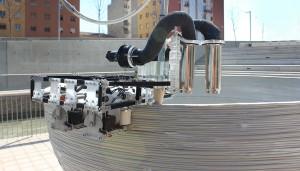 to begin printing. This robot uses the previously printed structure as a gripping support, so the material needs to dry extremely fast to allow it to support the next layer of the print. To do this, the Grip Robot uses heaters to cure the material as fast as possible. Once a structure’s shape and size are complete it is time to move on to the next robot.
to begin printing. This robot uses the previously printed structure as a gripping support, so the material needs to dry extremely fast to allow it to support the next layer of the print. To do this, the Grip Robot uses heaters to cure the material as fast as possible. Once a structure’s shape and size are complete it is time to move on to the next robot.
Vacuum Robot
This is the final robot of the MiniBuilder construction process. It uses a vacuum within a suction cup to allow for attachment to the surface of an object. The purpose of this robot is to reinforce the structure which has been printed. To do this it travels up and down the structure repeatedly with two tracks, printing a material almost perpendicular to that of the other layers. This provides substantial support for larger objects.
Working together these Minibuilders are able to produce large scale 3D prints without the need for a large scale 3D printer. Although the technology may not have been perfected, researchers have put in place a stepping stone for a new method of printing buildings and other large object, which we are sure will continue to develop.
What do you think about this new 3D printing system? Could you see large buildings and homes eventually using a technology like this? Let us know in the Minibuilder forum thread at 3DPB.com. Check out the video below, provided by IAAC, showing the Minibuilders in action.
Subscribe to Our Email Newsletter
Stay up-to-date on all the latest news from the 3D printing industry and receive information and offers from third party vendors.
Print Services
Upload your 3D Models and get them printed quickly and efficiently.
You May Also Like
The Dental Additive Manufacturing Market Could Nearly Double by 2033, According to AM Research
According to an AM Research report from 2024, the medical device industry, specifically in dentistry, prosthetics, and audiology, is expected to see significant growth as these segments continue to benefit from...
Heating Up: 3D Systems’ Scott Green Discusses 3D Printing’s Potential in the Data Center Industry
The relentless rise of NVIDIA, the steadily increasing pledges of major private and public investments in national infrastructure projects around the world, and the general cultural obsession with AI have...
AM Research Webinar Explores Continuum’s Sustainable Metal Additive Manufacturing Powders
Metal additive manufacturing (AM) powder supplier Continuum Powders is working to develop solutions that empower industries to reduce waste and optimize their resources. An independent life cycle assessment (LCA) of...
3D Printed Footwear Startup Koobz Lands $7.2M in Seed Round
California-based Koobz is focused on reshoring the U.S. footwear supply chain with advanced manufacturing processes, including 3D printing. The startup just announced that it has added $6 million to its...


